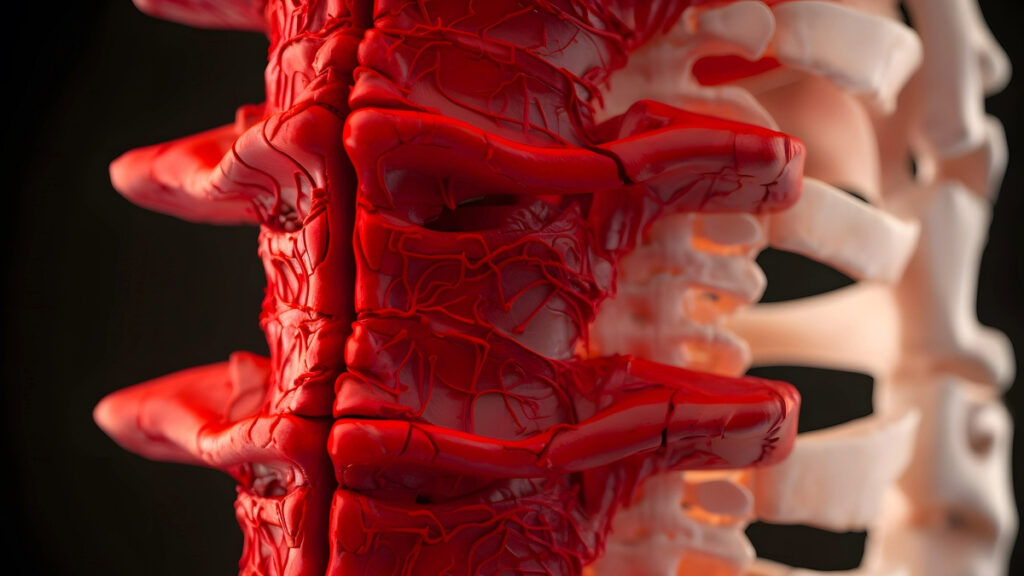When it comes to describing or identifying injuries and conditions, terms are often used incorrectly and sometimes interchangeably. One such example would be the misuse of the words sprain and strain. While both words are frequently used to describe what is properly identified as a sprain, they are actually two very different injuries. The same can be said when using the terms “herniated disc” and “bulging disc.” In the following article, you will learn the essential differences between these two terms and what treatments are most frequently recommended for each.
Differentiating a Herniated Disc From a Bulging Disc
Even though “herniated disc” and “bulging disc” are frequently used interchangeably, there are some marked differences that set these two conditions apart from one another and the ways in which they are categorized.
What is a Bulging Disc?
Technically, a bulging disc occurs when an area of the annulus fibrosus weakens but the inner contents do not leave the disc. It is frequently referred to as a disc prolapse. When a prolapse occurs, the disc bulges out from between the vertebrae but the outer layer remains intact. Depending on the location and size of the prolapse, this can cause severe symptoms or no symptoms at all.
A bulging disc is most often the result of degenerative disc disease or the natural process of aging but could stem from an injury (such as a fall or other type of accident) that weakens the outer portion of the disc.
Bulging discs can occur in any region of the spine — cervical (neck), thoracic (mid-section), or lumbar (lower back).
A bulging disc is typically thought of as the initial phase of degeneration that can, over time, lead to a more advanced stage of degeneration, known as a herniated disc.
What is a Herniated Disc?
A herniated disc differs from a bulging disc, in that the annulus fibrosus breaks or tears open, allowing the inner portion of the disc to spill out. These can be more finely categorized by how much tissue has escaped from the disc and whether or not it is has a connection to the inner disc.
As with bulging discs, a herniated disc may develop in the cervical, thoracic, or lumbar regions of the spine. The most common areas, however, are the neck (cervical) and lower back (lumbar).
Categorizing Spinal Disc Injury
To help better determine how to approach treatment and management of a bulging or herniated disc, a set of parameters has been established to allow doctors to categorize disc damage.
Extent
When assessing the extent of disc damage, the amount of tissue that is displaced is taken into account to help determine the severity of the injury.
Extrusion
In cases of an extrusion, a breach in the outer layer, or annulus fibrosus, allows a portion of the inner tissue, the nucleus pulposus, to squeeze out but it remains attached to the disc. Although the herniated portion has not broken off, it can invade the channels through which the nerves travel. The displaced disc material places pressure on the nerves and can cause symptoms such as pain, abnormal sensations, numbness or weakness.
Sequestration
When a disc displays sequestration, the inner contents have escaped through the tear in the annulus fibrosus and become completely separated from the entire disc structure, allowing the fragment to move freely within the spinal canal.
Tissue Consistency
An important factor when considering treatment options and the likelihood of future problems from a bulging or herniated disc is the tissue composition.
When a disc initially herniates, the displaced tissue has a soft consistency. Both the outer layer and the gel-like inner contents are considered soft tissue.
Over time, if the body’s natural response to a herniation fails to absorb the displaced tissue it can become more rigid, fixed or even calcify. This means that the tissue of either the fibrous outermost layer or even the inner contents has become bone-like through a process known as calcification. Calcified tissue, or bone spurs, may also develop with a bulging disc that is associated with degenerative disc disease.
Bulging and Herniated Disc Treatments
Typically, treatment for a bulging disc starts with your general practitioner. He or she can assess your symptoms and suggest non-surgical options. Conservative treatment is usually recommended. If it is felt that surgery or further consultation is necessary, he or she will refer you to a spine surgeon, either a neurosurgeon or orthopedic surgeon.
Treatment options for both bulging and herniated discs are considered on a case by case basis and are more dependent on the severity of the patient’s presentation as opposed to the radiographic appearance of the damaged disc. Depending on the condition of the individual, treatment for a herniated disc can be non-surgical, surgical, or a combination of both. The non-surgical options range from activity modification, physical therapy, medications (such as non-steroidal anti-inflammatory drugs often known as NSAIDs, narcotics, etc.), and possibly steroidal injections.
On the other hand, if the patient fails to respond to conservative care or if a neurological deficit exists, defined as sensory loss or weakness, surgery may be recommended. The recommended surgery is typically dependent on the region of the spine affected by the herniated disc.
If surgery is required for a lumbar (lower back) herniated disc, the patient may be offered a microdiscectomy. This is a less invasive surgical procedure in which the surgeon, through small incisions and specialized instruments, is able to remove the displaced portion of the disc. Rarely, a lumbar fusion may need to be considered if the herniation is associated with spinal instability, however, this is by far the exception and is not typical.
If a cervical (neck) herniation requires surgery, options include a microdiscectomy, disc removal and fusion, or disc removal with the insertion of a prosthetic disc. The mechanics of the neck are quite different from the lower back and therefore these additional options need to be considered. A fusion procedure uses bone grafting to help reinforce and solidify the spaces between one or more vertebrae while a prosthetic disc is a mechanical device meant to replicate normal motion. Selecting the appropriate surgical procedure is based on an individualized approach, specific for a given patient.
If you feel you may be experiencing a bulging or herniated disc, it is important to seek the opinion of your doctor or spine surgeon. Once you have a diagnosis you can work closely with your specialist to develop a care plan that is tailored to your needs and lifestyle.





